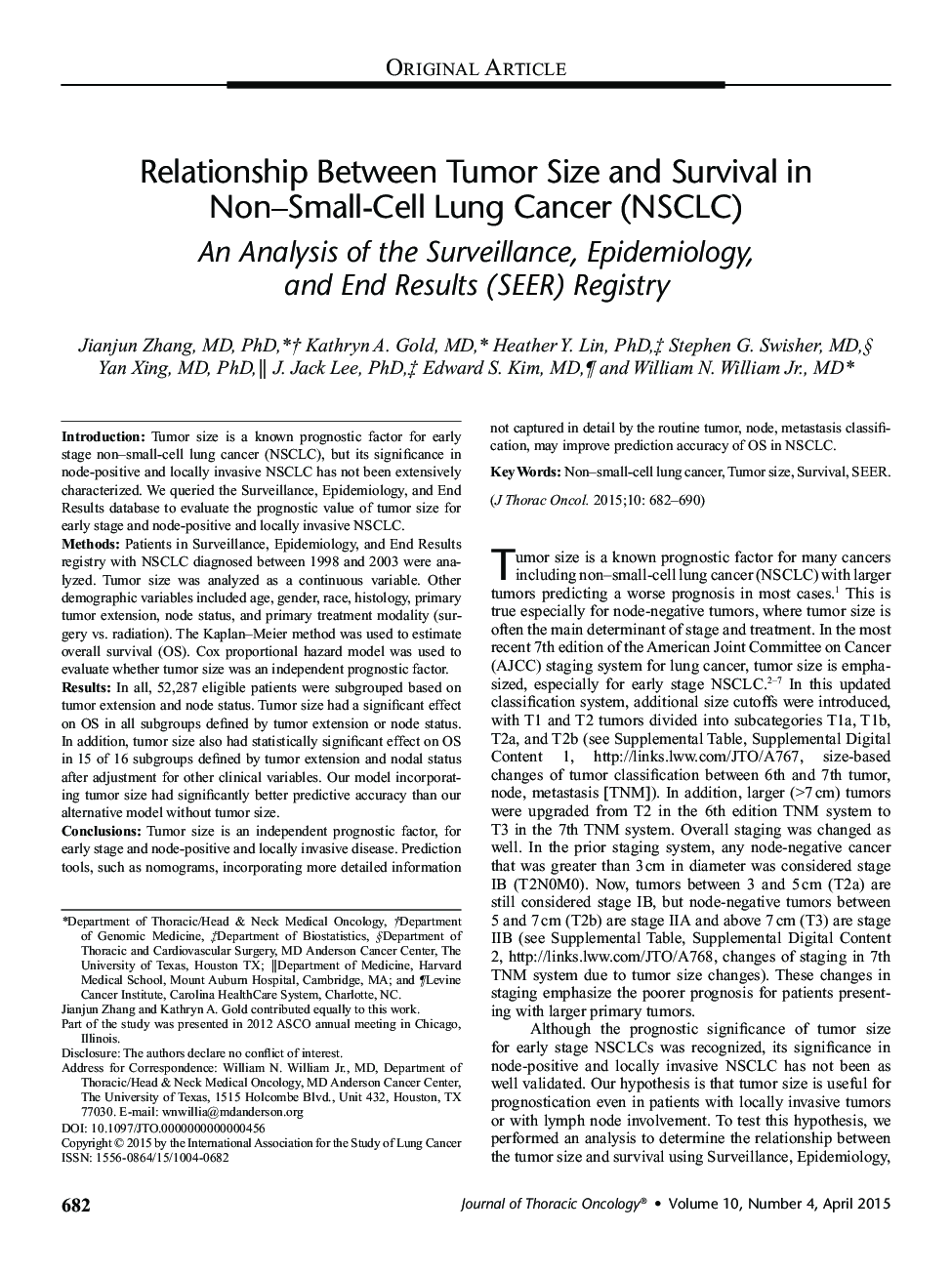| کد مقاله | کد نشریه | سال انتشار | مقاله انگلیسی | نسخه تمام متن |
|---|---|---|---|---|
| 6193077 | 1258693 | 2015 | 9 صفحه PDF | دانلود رایگان |

IntroductionTumor size is a known prognostic factor for early stage non-small-cell lung cancer (NSCLC), but its significance in node-positive and locally invasive NSCLC has not been extensively characterized. We queried the Surveillance, Epidemiology, and End Results database to evaluate the prognostic value of tumor size for early stage and node-positive and locally invasive NSCLC.MethodsPatients in Surveillance, Epidemiology, and End Results registry with NSCLC diagnosed between 1998 and 2003 were analyzed. Tumor size was analyzed as a continuous variable. Other demographic variables included age, gender, race, histology, primary tumor extension, node status, and primary treatment modality (surgery vs. radiation). The Kaplan-Meier method was used to estimate overall survival (OS). Cox proportional hazard model was used to evaluate whether tumor size was an independent prognostic factor.ResultsIn all, 52,287 eligible patients were subgrouped based on tumor extension and node status. Tumor size had a significant effect on OS in all subgroups defined by tumor extension or node status. In addition, tumor size also had statistically significant effect on OS in 15 of 16 subgroups defined by tumor extension and nodal status after adjustment for other clinical variables. Our model incorporating tumor size had significantly better predictive accuracy than our alternative model without tumor size.ConclusionsTumor size is an independent prognostic factor, for early stage and node-positive and locally invasive disease. Prediction tools, such as nomograms, incorporating more detailed information not captured in detail by the routine tumor, node, metastasis classification, may improve prediction accuracy of OS in NSCLC.
Journal: Journal of Thoracic Oncology - Volume 10, Issue 4, April 2015, Pages 682-690